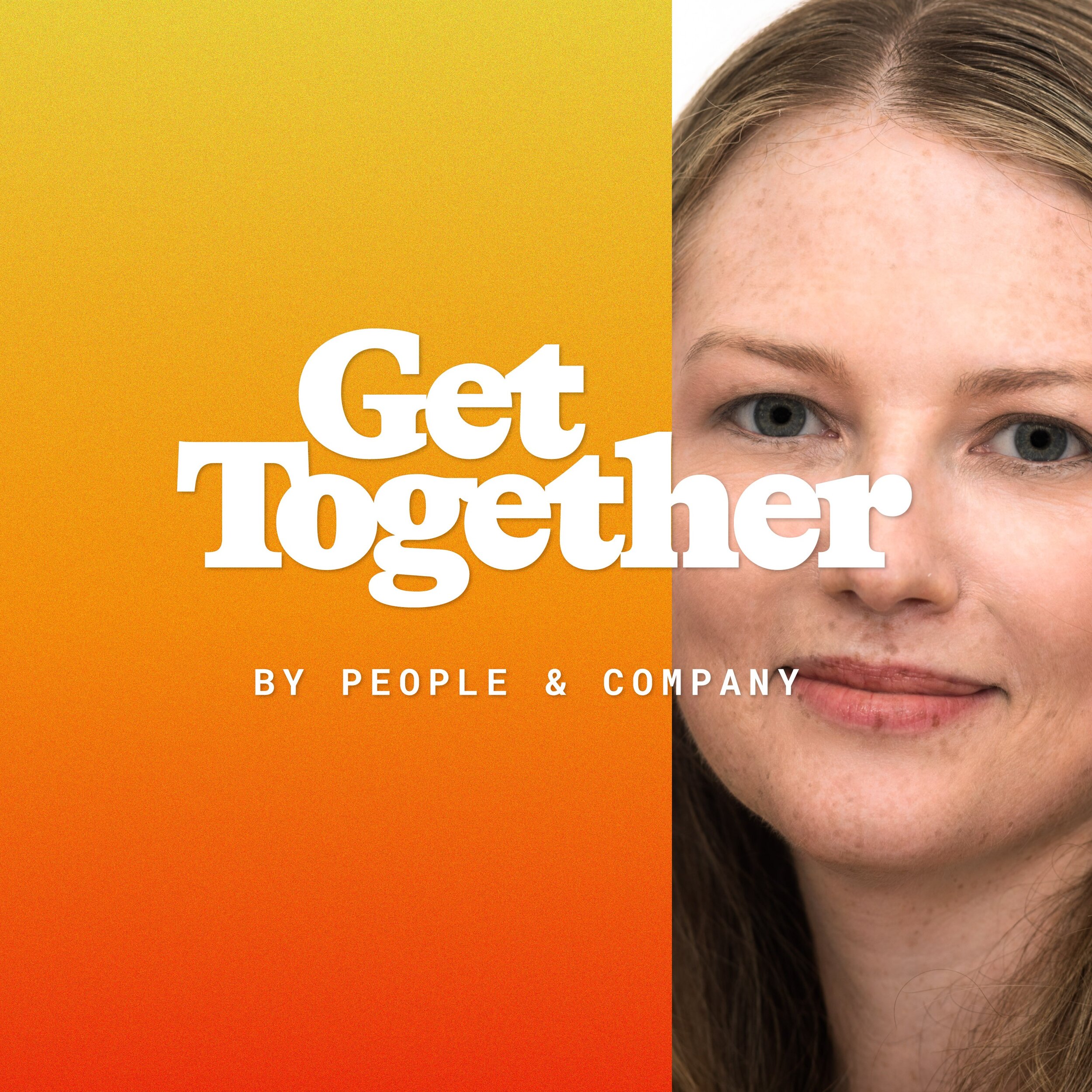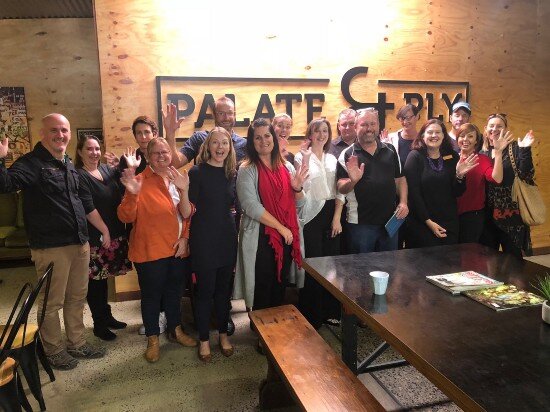How a movement took over LinkedIn 🗺 Anna McAfee, #LinkedInLocal
Listen on: Apple, Google, Spotify, Stitcher, TuneIn, Overcast, Pocketcast, RSS
Read: Transcript
Episode at a glance:
GUEST: Anna McAfee
COMMUNITY: #LinkedInLocal
HOSTS: Bailey Richardson & Mia Quagliarello
“Leadership is actually the first few followers, not the crazy first person to stand up on stage.” - Anna McAfee
Show Notes
In May 2017, Anna McAfee put up a simple post on LinkedIn to see if anyone living in her hometown of Coffs Coast, Australia wanted to get together. She had just returned after years of living abroad and wanted to “get to know the people behind the profiles” in her area.
Anna included the hashtag #LinkedInLocal. Fifteen people made it out to the first Coffs Coast event, but the online response was what would change Anna’s life.
Three strangers—Alexandra Galviz in London, Manu Goswami in NYC, and Erik Eklund in Brussels—raised their hand to also host a #LinkedInLocal in their city. No one could predict what happened next.
Host requests started pouring in from around the world. The founding team was soon hosting after-hours trainings six nights a week to help new cities ramp up. For two years, Anna and her co-creators led, mentored, and managed the #LinkedInLocal global community. At its height, #LinkedInLocal had more than 1,000 hosts and had rallied over 300,000 humans, in 650+ cities across 92 countries.
Anna & co. fostered this community without formal support from LinkedIn. She walked a fine line between an unexpected, organic community and the priorities of the platform. In 2019, Anna stepped away and she recently co-authored a book about her experience: How a Hashtag Changed the World.
We talked with her about creating a host community and the friction that can appear when an organic community erupts on a major platform.
What Happens When a Thriving Organic Community Collides with a Growing Business?
Note from Mia on How VidCon, MeltingMan, and #LinkedInLocal navigate those relationships
Our conversation with Anna McAfee brought me back to the early days at YouTube, when organic communities would spring up around the brand and we wondered how to handle it. I’m thinking of specifically the first time I heard about VidCon, YouTube’s creator conference. I remember that as a team, we initially kept it at arm’s length.
Part of it was wanting to see how it would turn out because they had big ambitions for the event. And the other part was this belief that the YouTube community is a self-made meritocracy that didn’t need us, as kingmakers, to thrive. In those early days, the brand felt like it had to take a backseat to what was happening on the screen. You could even see that in the design of YouTube — how generic it is and how it’s developed to let the creator do the talking and shine.
I feel like what happened with LinkedIn and #LinkedInLocal followed perhaps the same path, where initially the brand kept it at arm’s length and then gradually saw the value and wanted to get involved.
These kinds of real-world events and splinter communities, whether generated by the brand or by the community itself, are so integral to strengthening bonds and helping people feel more invested in the community that they are literally helping to build.
At this point, I think this kind of organic traction is something that any community manager would see as a sign of a community’s health — assuming that the entity upholds the same values.
So if you notice this happening in your community, I would say, embrace it! When I look at how Burning Man Project has navigated this, for example, their community grew out of a single event in the desert. They could have kept this exclusive but instead they encouraged people to take the principles and the cultural tentpoles and add some regional flair. There’sFuego Australin Argentina,Melting Manin North Dakota, andKiwi Burnin New Zealand (to name a few).
It’s so cool — they each have different versions of “The Man” and the ritual burning of the effigy. By empowering the worldwide community, Burning Man Project helped turn a local event into a global community.
I would also say be really clear about what is and isn’t OK with regards to the usage of your brand. At Flipboard, we provided assets or guidance such that people could easily promote non-official events like a Twitter chat or conference talk. Or maybe it’s really important that the communitynotuse your name or logo: that’s on you and your team to make super-duper clear with the community organizers.
Finally, send swag or figure out other ways to show these people some love! They are doing the good work for you. Think about how to say thank you, learn what motivates them, and give them more of that.
In our book, “Get Together: How to build community with your people,” we share a framework to spark, stoke, and scale community.
Anna offers insights into each step of building a community from sparking the flame to passing the torch.
Identify your “who”
When Anna was working in recruiting, she learned many of the LinkedIn business tools. She turned to Sales Navigator to run a postcode search in her small city of 70,000 people, and identified that 23,000 had accounts and 280 were “active.” When she made her first post, inviting local folks to join her at a meetup, she knew that was the pool of potentials who might attend.
Photo from #LinkedInLocal event
Even from that first post, local was “central to who we are,” Anna shared. “It’s where you’re going to find that face-to-face connection if you’re craving it. From a business perspective, it’s where you’re going to find new customers. A lot of businesses are largely dependent on local support.”
When Anna made that post and added the hashtag #LinkedInLocal, the local approach resonated in Coffs Coast and beyond. When Anna trained other city hosts, their “whos” remained consistent: business people who wanted to connect to their local communities.
Balancing inclusion and exclusion
Business networking can be exclusive. It’s often paid, invite-only, or behind the closed doors of alumni programs and clubs. When Anna and the co-creators of #LinkedInLocal defined core values early on, the first one they identified was diversity. “We wanted to be collaborative, not competitive.”
Subsequent values supported that perspective:
Authenticity. The tagline for #LinkedInLocal was “get to know the people behind the profile.” Events encouraged conversation, not selling or shoving business cards in one another’s faces. They made the choice to have the events be free, underpinning the authenticity behind the events because hosts weren’t motivated by money.
Respect. Events were strictly “pitch-free” to avoid the typical pitfalls of networking environments because Anna knew that LinkedIn had many people using it who aren’t salespeople.
“The values actually helped the growth,” Anna shares. Signaling strong values helped Anna & Co. pinpoint the right new hosts and ensure the experience scaled with quality.
Photo from #LinkedInLocal event
Cultivating your identity
#LinkedInLocal had to walk a tightrope with their identity between the organic community that emerged from within the platform and brand of a major public company.
So in trainings, Anna and her team had to be explicit with new hosts about not using the LinkedIn logo and making sure to state their event was not endorsed by LinkedIn. Rather this was a “user-driven community to get to know the people behind the LinkedIn profiles.”
Photo from #LinkedInLocal event
Eleven months in, the LinkedIn team noticed and reached out. The early conversations were positive. “This was changing the way people use the platform. It was creating an enormous amount of very rich and authentic content,” Anna told us. The internal LinkedIn team explored non-financial ways to support the community (e.g. a #LinkedInLocal content filter and badge).
Two months later, the conversation shifted to focus on protecting the LinkedIn brand. Ultimately, #LinkedInLocal and LinkedIn never formed a partnership, keeping their separate identities and diluting the community’s momentum.
Supercharging Leaders
After each training call, Anna and the team made sure to connect hosts regionally. When putting Florida hosts from Fort Lauderdale, Miami and Orlando in touch, for example, they began to see these people connect independently, attending one another’s events, and feeding off of each other’s enthusiasm.
“There’s something very powerful about chapter leaders knowing that what you’re doing in your city isn’t alone. To know that you’re a part of a bigger movement and a bigger impact.” Anna knew all along that creating a community amongst hosts would be crucial to their ability to keep the community vibrant and meaningful as it grows.
Ultimately when Anna and the founding team stepped away, their stewardship of the host community was what the #LinkedInLocal community lost. Participation has shrunk as a result. And it’s a tragedy. With adequate resources, Anna believes the #LinkedInLocal community could have grown to three times its size.
👋🏻Say hi to Anna and Learn more about #LinkedInLocal.
Listen and Subscribe to the Podcast:
Apple, Google, Spotify, Stitcher, TuneIn, Overcast, Pocketcast, RSS
Read:
Get Together is produced by the team at People & Company.
We published a book and we’ve worked with organizations like Nike, Porsche, Substack and Surfrider as strategy partners, bringing confidence to how they’re building communities.
Stay up to date on all things Get Together.





